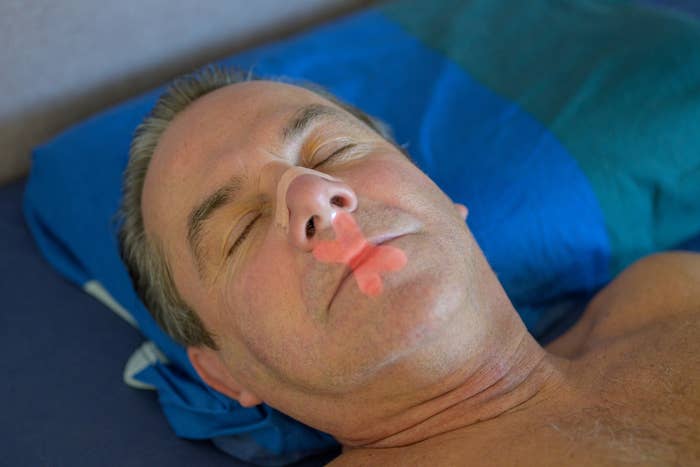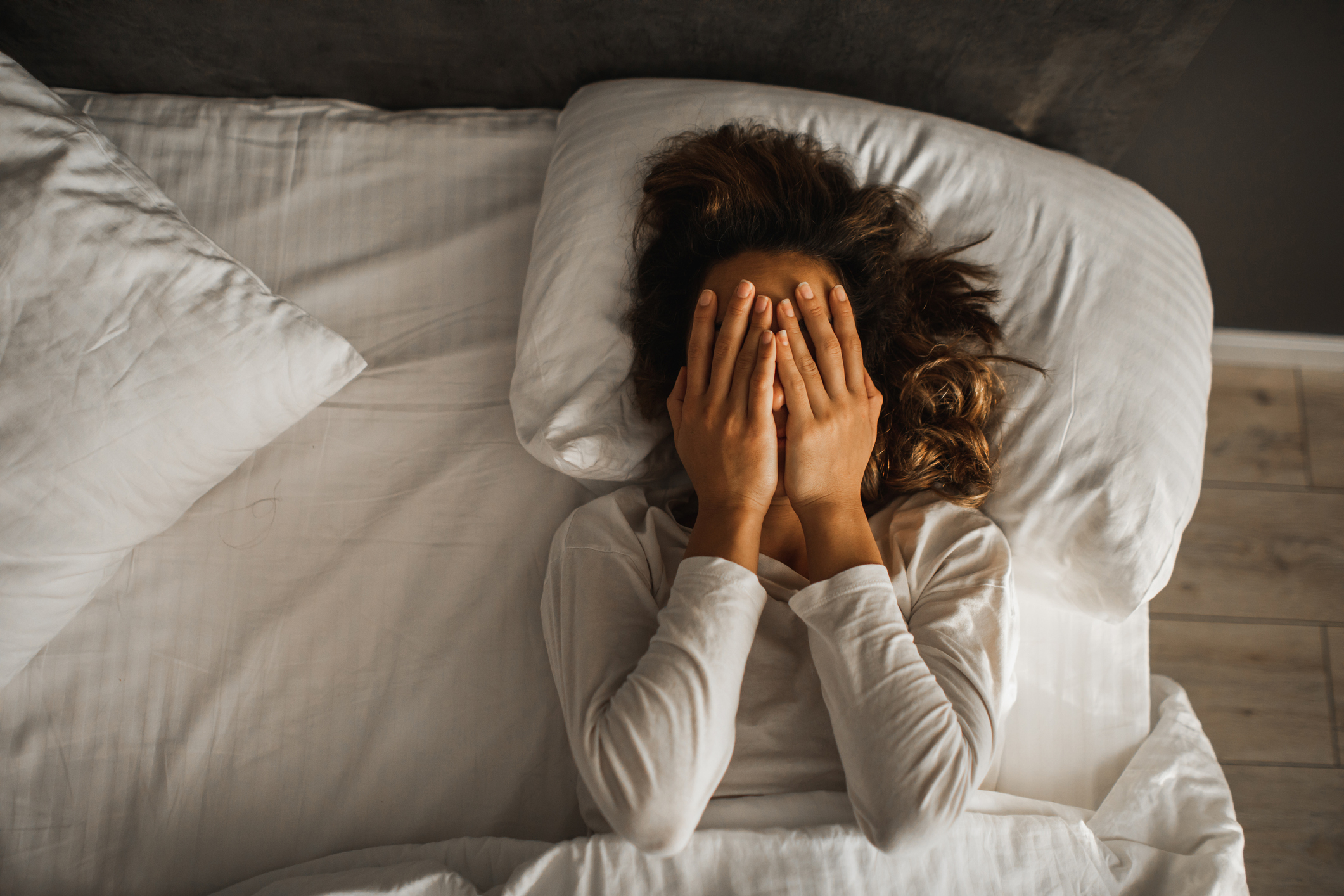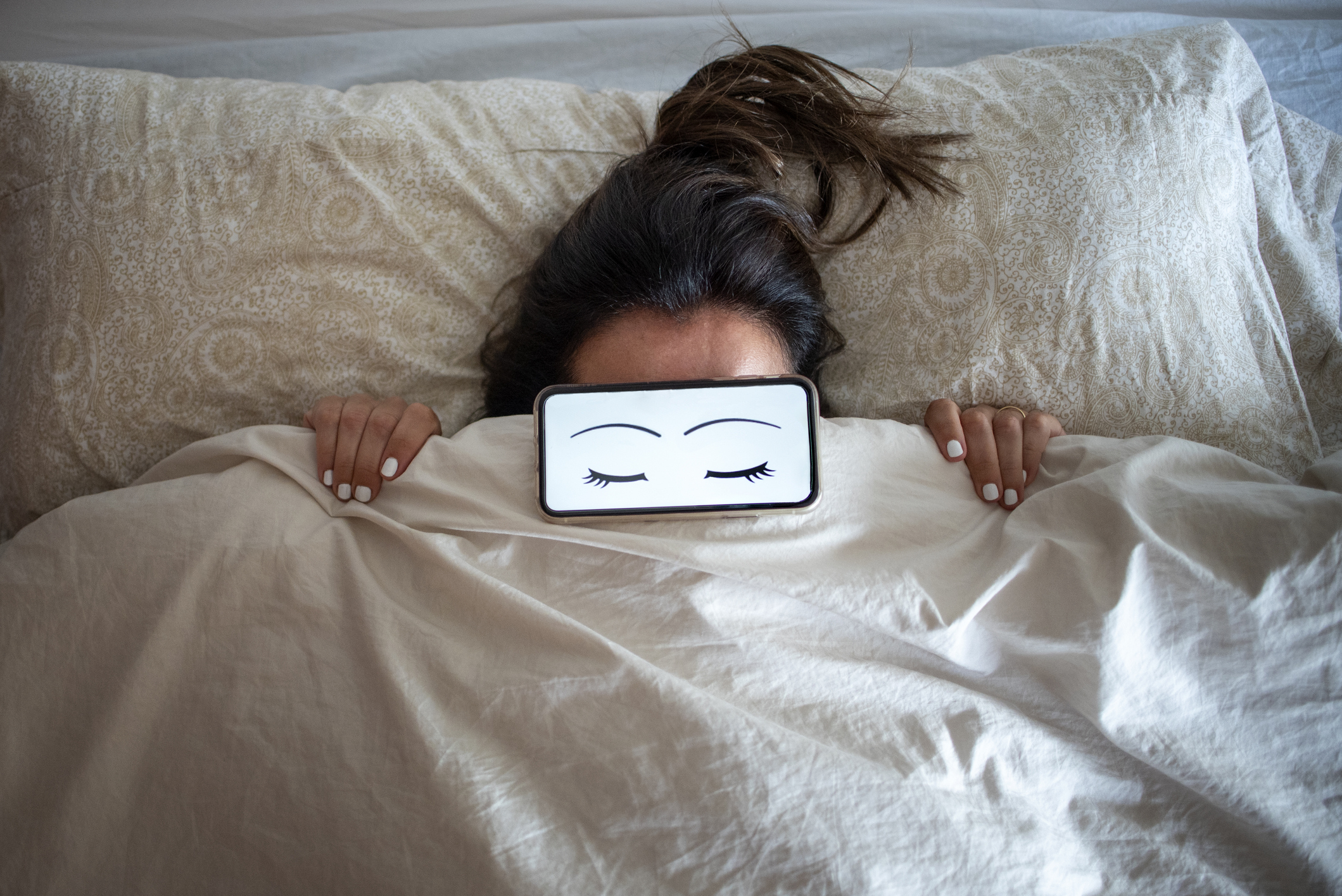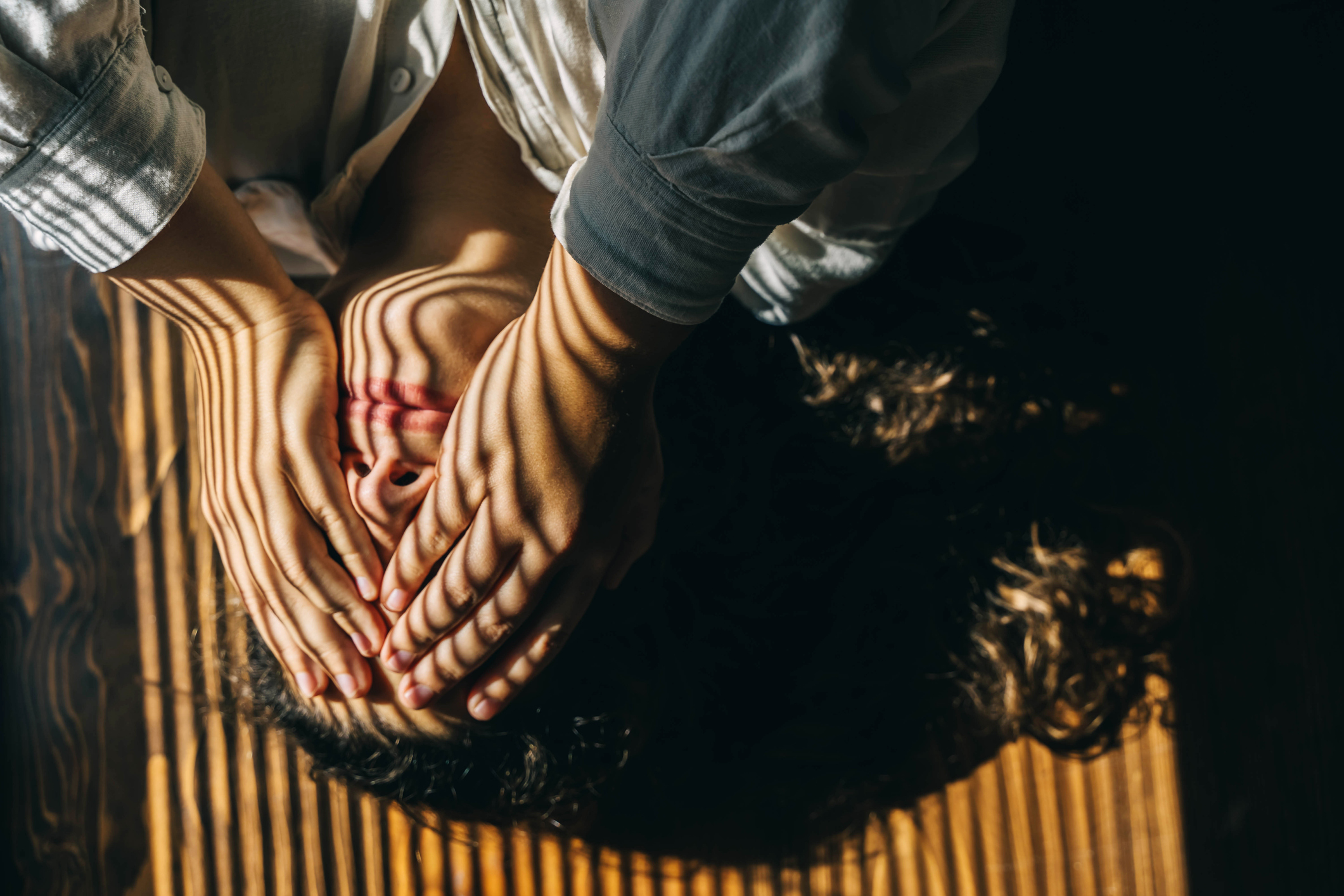
From bed rotting to drinking lettuce water to help you wind down, many sleep-related trends have reached viral status on TikTok. But a particularly fascinating one that’s endured for more than a year is mouth taping.
“Mouth taping has become a popular wellness trend to force nasal breathing at night, which is perceived to improve quality of sleep, cognition and focus during the day, as well as cardiovascular health,” said Taylor Fazio, a wellness adviser at the Lanby, a health care service.
Basically, the practice involves using porous surgical tape to keep your mouth shut at night. The idea is that if you apply the tape at bedtime, your mouth will stay closed while you sleep, and you’ll have to breathe through your nose ― thus staving off the negative effects of mouth breathing, which has been linked with tooth decay, dry mouth, bad breath and gum disease.
“Like many health fads, the mouth taping trend seems to have emerged over the past couple of years due to a viral TikTok video touting its benefits for reducing snoring,” said Wendy Troxel, a behavioral sleep medicine specialist and author of “Sharing the Covers: Every Couple’s Guide to Better Sleep.” “But it’s important to note that this is not an evidence-backed strategy, nor is it recommended by physicians.”
Why are people doing this?

We do know that nasal breathing is generally more beneficial than mouth breathing.
“Breathing through your nose allows you to filter air that you breathe in while sleeping, and also warms and humidifies the air, which can reduce irritation as it travels through your airways and into your lungs,” said Dr. Angela Holliday-Bell, a pediatrician and certified clinical sleep health specialist. “Breathing through your nose also aids in the elasticity of the lungs and leads to more oxygen absorption in your blood. All of these things help to improve your sleep quality.”
Fazio pointed to James Nestor’s popular 2020 book “Breath: The New Science of a Lost Art,” which touts additional benefits of nasal breathing related to daytime focus, athletic performance, stress regulation and facial structure. “Ask a dentist ― they can usually identify breathing patterns based on oral structure,” she said.
Although experts agree that nasal breathing is generally better than mouth breathing, the case for mouth taping as a healthy or effective way to force nasal breathing has less support.
“There has been shown to be some benefit in select few individuals, but more research on its use is necessary,” Holliday-Bell said.
What are the downsides?

There are safety concerns about mouth taping.
“If someone truly needs to breathe through their mouths while sleeping due to nasal obstruction or other reasons, mouth taping can lead to difficulty breathing at night,” Holliday-Bell said. “It can also lead to aspiration ― where contents of your stomach get into your lungs due to reflux or vomiting. Some people may experience irritation from the tape being used as well.”
The potential for reduced airflow can be dangerous for people with conditions like sleep apnea, which is commonly undiagnosed. So if you want to try out mouth taping, be sure to consult with your health care provider first.
Mouth taping can also cause irritation to the skin. To avoid this and other possible issues, Fazio recommended using only “specific medical tape that is breathable, hypoallergenic, and easy to remove,” rather than products that aren’t intended for the body, like duct tape or masking tape.
Often, with medical tape, “saliva and pressure of tongue will easily remove the tape when needed,” Fazio said.
There are other ways to address sleep issues.

Some other methods that address sleep and breathing issues have a clearer basis in science.
“If you are concerned about snoring, or your bed partner is, try strategies that actually have evidential support,” Troxel said. “First, if snoring is a big issue, it is critical to see a doctor to determine if sleep apnea is the cause. Sleep apnea remains woefully under-diagnosed and is a serious health condition if left untreated.”
She noted that side sleeping or sleeping in a slightly elevated position might reduce mouth breathing and snoring. Even if this isn’t your current preferred way to snooze, you can change your default sleeping position with strategic pillow placement and even special devices.
Other potential remedies for better sleep include applying nasal strips, testing relaxation techniques, getting tested for asthma and allergies, and improving your oral and sleep hygiene.
As for the partner of a snorer (whose sleep also suffers), Troxel said: “Earplugs, noise machines or going to sleep before the snoring partner comes to bed may help.”
This article originally appeared on HuffPost.
